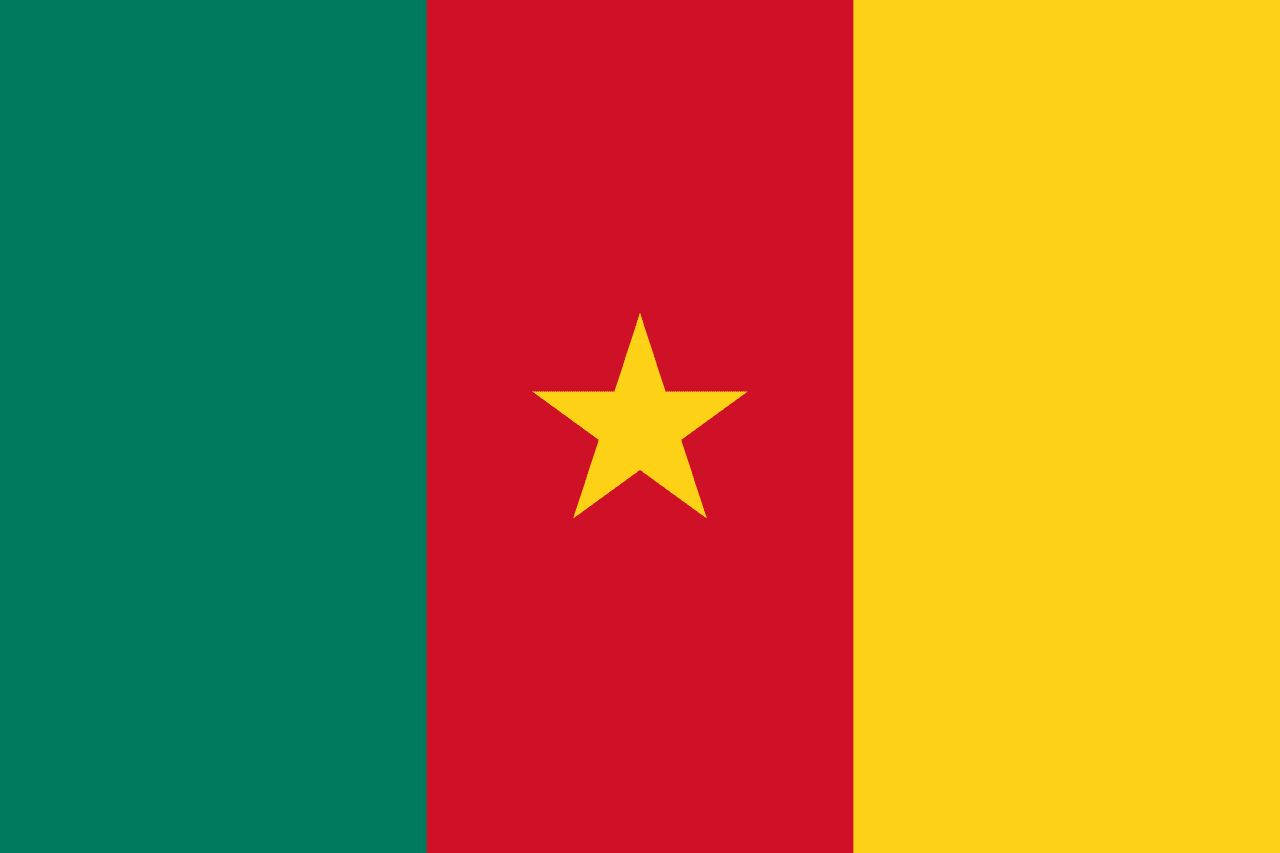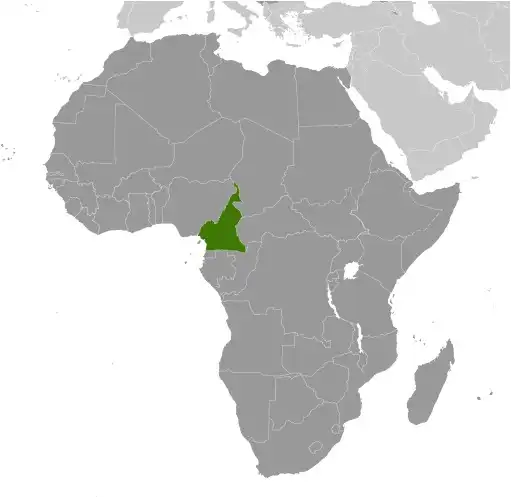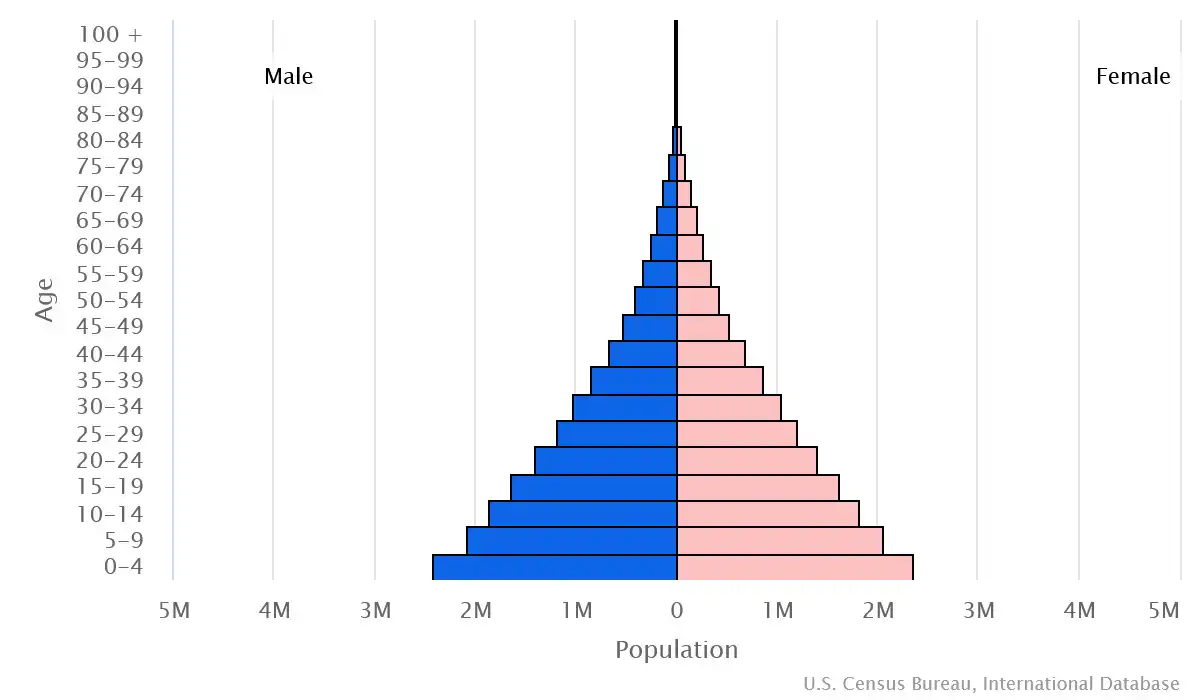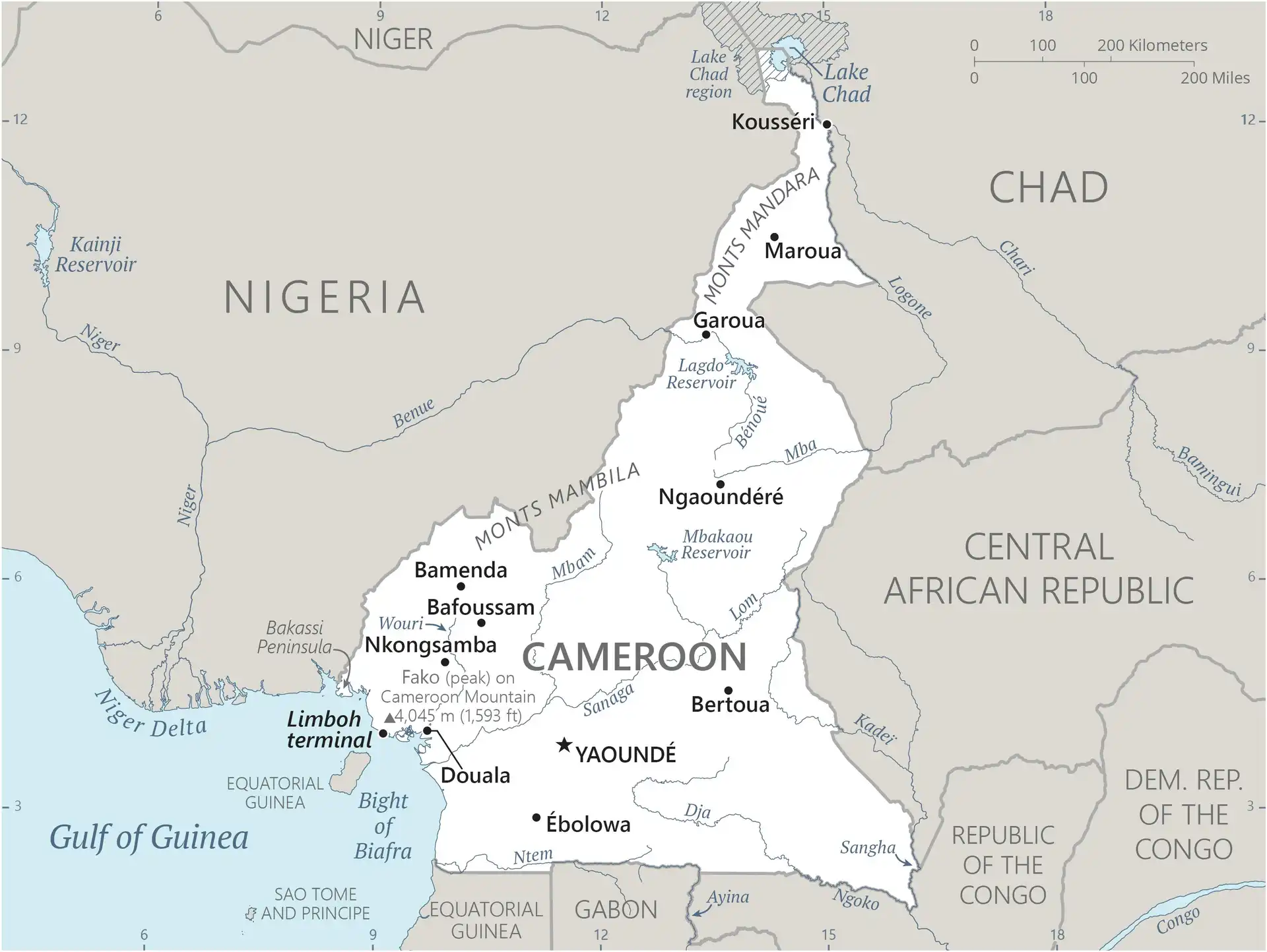
Cameroon Country Profile
Key Facts of Cameroon

| Government type: | presidential republic |
| Capital: | Yaounde |
| Languages: | 24 major African language groups, English (official), French (official) |
Cameroon Demographic Data
Ethnic Groups in Cameroon(2022 est.)
Religious Groups in Cameroon (2022 est.)
Age pyramid of Cameroon

Cameroon Economy Statistics
Economic overview of Cameroon
largest CEMAC economy with many natural resources; recent political instability and terrorism reducing economic output; systemic corruption; poor property rights enforcement; increasing poverty in northern regions
Cameroon Real GDP (purchasing power parity) in Billion $
Cameroon Real GDP per capita in $
Cameroon's Exports & Imports in billion $
Top 5 Import Partnerin 2022 (61%) of Cameroon
Top 5 Import Commodities in 2022 of Cameroon
- refined petroleum ⛽
- wheat 🌾
- garments 👕
- rice 🍚
- plastic products ♻️
Top 5 Export Partnerin 2022 (66%) of Cameroon
Top 5 Export Commodities in 2022 of Cameroon
- crude petroleum 🛢️
- natural gas 💨
- wood 🌲
- cocoa beans 🍫
- gold 💰
Geography of Cameroon
Map of Cameroon

Land and Water Distrubtion of Cameroon
Natural Resources of Cameroon
- petroleum 🛢️
- bauxite 🪨
- iron ore ⛓️
- timber 🌲
- hydropower 💧⚡
Climate inCameroon
varies with terrain, from tropical along coast to semiarid and hot in north
History of Cameroon - a Summary
Powerful chiefdoms ruled much of the area of present-day Cameroon before it became a German colony known as Kamerun in 1884. After World War I, the territory was divided between France and the UK as League of Nations mandates. French Cameroon became independent in 1960 as the Republic of Cameroon. The following year, the southern portion of neighboring British Cameroon voted to merge with the new country to form the Federal Republic of Cameroon. In 1972, a new constitution replaced the federation with a unitary state, the United Republic of Cameroon. The country has generally enjoyed stability, which has enabled the development of agriculture, roads, and railways, as well as a petroleum industry. Nonetheless, unrest and violence in the country's two western, English-speaking regions have persisted since 2016. Movement toward democratic reform is slow, and political power remains firmly in the hands of President Paul BIYA.
